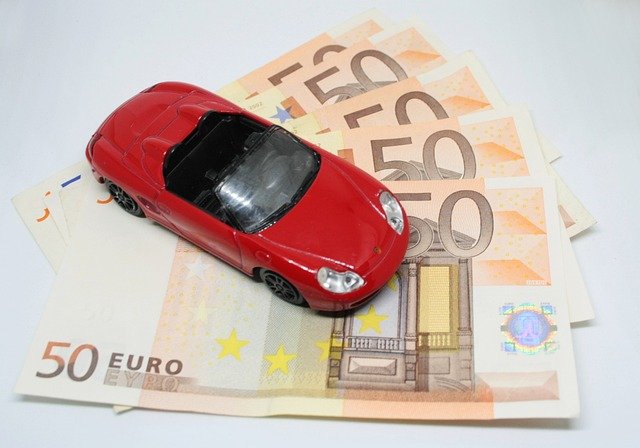Understanding Market Trends for Used Honda Civic Prices
The used car market for Honda Civics reflects broader automotive industry patterns, with pricing influenced by factors ranging from model year and mileage to regional demand and seasonal fluctuations. Understanding these market dynamics helps buyers and sellers make informed decisions in an ever-changing marketplace where vehicle values can shift significantly based on economic conditions, fuel prices, and consumer preferences.

Honda Civics have consistently ranked among the most popular choices in the used car market, maintaining strong resale values due to their reputation for reliability, fuel efficiency, and affordable maintenance costs. Current market conditions show varying price points across different model years, with newer generations commanding premium prices while older models offer budget-friendly alternatives for cost-conscious buyers.
What Factors Influence Used Honda Civic Price Fluctuations
Several key elements drive pricing variations in the used Honda Civic market. Model year significantly impacts value, with 2016 and newer generations featuring updated styling, improved technology, and enhanced safety features commanding higher prices. Mileage remains a critical factor, with vehicles under 60,000 miles typically selling for 15-25% more than higher-mileage counterparts. Trim level differences also affect pricing, as higher-end variants with features like leather seating, navigation systems, and premium audio packages maintain stronger resale values.
Geographic location plays an important role in pricing dynamics. Urban markets with higher demand often see elevated prices, while rural areas may offer more competitive rates. Seasonal trends also influence values, with convertible and sporty variants seeing increased demand during spring and summer months.
How Market Conditions Shape Used Honda Civic Price Guide Values
Economic factors substantially impact used Honda Civic pricing structures. During periods of economic uncertainty, demand for reliable, fuel-efficient vehicles like the Civic typically increases, driving up market values. Conversely, when new car incentives are aggressive, used car prices may soften as buyers opt for new vehicles instead.
Supply chain disruptions affecting new car production have historically created increased demand for used vehicles, pushing prices upward. Interest rates also influence buyer behavior, with higher rates making used cars more attractive compared to financing new vehicles. Gas price fluctuations particularly affect Civic values, as fuel-efficient models become more desirable when energy costs rise.
Where to Find Reliable Used Honda Civic Insights
Accurate market data comes from multiple sources that track automotive pricing trends. Professional appraisal services provide comprehensive valuation reports considering vehicle condition, maintenance history, and local market conditions. Online platforms aggregate pricing data from thousands of transactions, offering real-time market insights and trend analysis.
Dealership trade-in values often reflect wholesale pricing, while private party sales typically command higher prices. Auction results provide insight into wholesale market trends, particularly for higher-mileage or older model vehicles. Regional automotive publications and industry reports offer additional context about local market conditions and emerging trends.
How to Pick the Right Used Honda Civic for Your Budget
Selecting an appropriate used Honda Civic requires balancing desired features with budget constraints and long-term ownership costs. Buyers should establish clear priorities regarding model year preferences, acceptable mileage ranges, and required features before beginning their search.
Pre-purchase inspections by qualified mechanics help identify potential issues that could affect long-term ownership costs. Vehicle history reports reveal important information about accidents, service records, and previous ownership patterns. Financing pre-approval allows buyers to negotiate from a stronger position and understand their true purchasing power.
Consideration of total ownership costs beyond the purchase price includes insurance rates, expected maintenance expenses, and projected depreciation. Newer models may offer warranty coverage and lower maintenance costs, while older vehicles provide lower initial investment but potentially higher ongoing expenses.
| Model Year Range | Average Price Range | Key Features | Typical Mileage |
|---|---|---|---|
| 2020-2023 | $18,000-$26,000 | Honda Sensing, touchscreen infotainment | 15,000-45,000 miles |
| 2016-2019 | $14,000-$20,000 | Updated styling, improved fuel economy | 40,000-80,000 miles |
| 2012-2015 | $10,000-$16,000 | Reliable powertrain, basic features | 60,000-120,000 miles |
| 2008-2011 | $6,000-$12,000 | Proven reliability, minimal technology | 80,000-150,000 miles |
All pricing information reflects current US dollar market values for the United States automotive market. Prices, rates, or cost estimates mentioned in this article are based on the latest available information but may change over time. Independent research is advised before making financial decisions.
Market trends for used Honda Civics continue evolving as automotive technology advances and consumer preferences shift. Understanding these dynamics helps both buyers and sellers navigate the marketplace effectively, ensuring informed decisions that align with individual needs and financial circumstances. Regular monitoring of market conditions and pricing trends provides valuable insight for timing purchases or sales to maximize value in this competitive segment.




